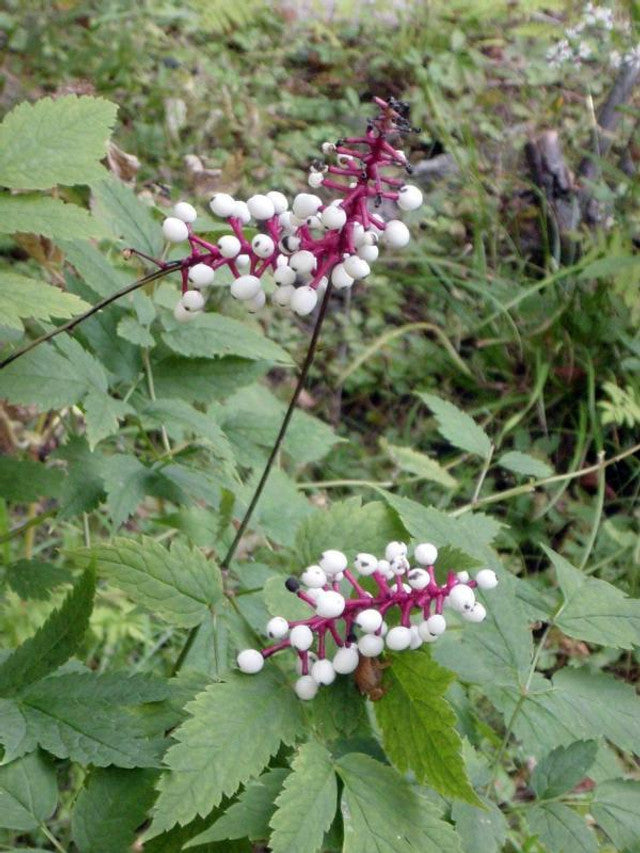
White Baneberry
The White Baneberry (Actaea pachypoda) is a native woodland perennial known for its elegant form, intriguing blooms, and eye-catching berries. Native to eastern North America, White Baneberry is a distinctive and dramatic addition to shaded garden spaces, offering gardeners a touch of the wild and whimsical with its clusters of white berries and delicate spring flowers.
White Baneberry is a low-maintenance, shade-loving perennial that thrives in humus-rich, well-drained soils. It is an excellent choice for woodland gardens, shaded borders, or naturalizing in the understory of trees. This perennial spreads slowly and can form colonies over time. While the plant’s berries are highly toxic to humans if ingested, they serve as an important food source for birds and wildlife. Gardeners love White Baneberry for its distinctive white berries and ferny foliage, which provide year-round interest in shady gardens. The plant is easy to care for, tolerates full shade, and is well-suited for woodland and native plant gardens.
Gardeners are drawn to White Baneberry for its unique appearance and ecological value. The striking contrast of white berries and black dots creates visual interest in the garden from spring to fall, while the plant’s graceful foliage and spring blooms add further texture and detail. White Baneberry is low maintenance, shade-tolerant, and naturalizes easily, making it a great choice for woodland and native plant gardens.
White Baneberry pairs well with other native shade-tolerant perennials such as trilliums, ferns, foamflower, and bloodroot. By grouping these plants together, gardeners can create a layered, textured planting that captures the beauty of North American native woodlands and supports pollinators and birds. For those looking for a native perennial with both ornamental appeal and ecological benefits, White Baneberry is an excellent choice. Its striking white berries, spring flowers, and adaptability to woodland conditions make it a standout plant for shaded gardens that provide wildlife habitat year after year.




